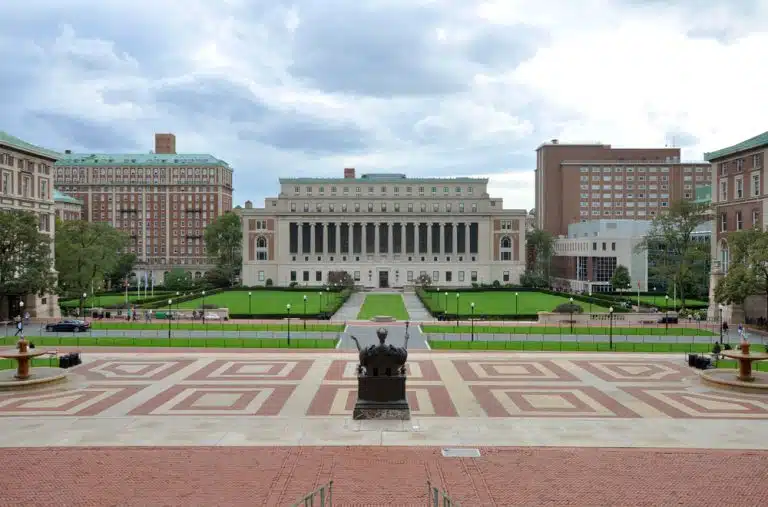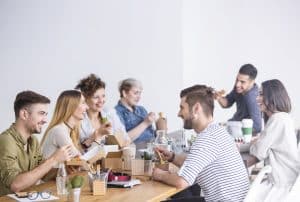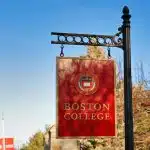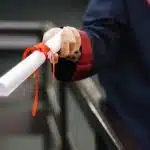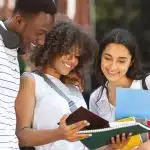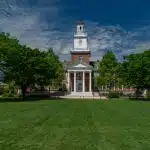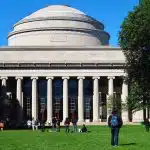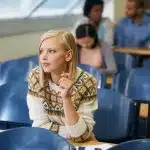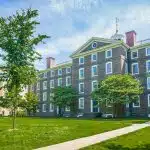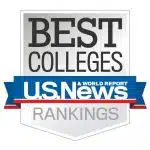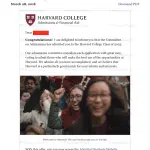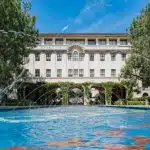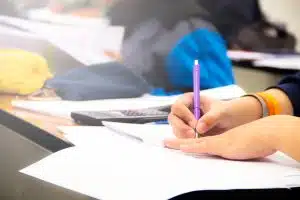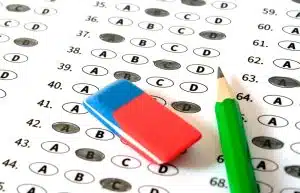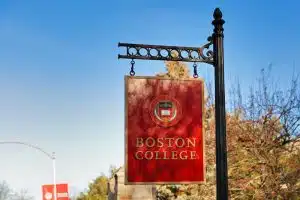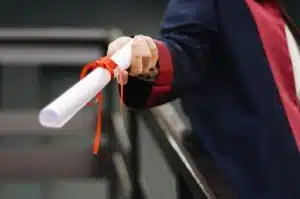Columbia University is not just one of the world’s most prestigious educational institutions; it’s a place rich in history and traditions that have shaped its identity over the years. The rules have played a significant role in building the unique academic and social culture that students and faculty experience at the University today. This article explores the various traditions at Columbia, their origins, and their impacts.
The Historical Background of Columbia University
The story of Columbia University began in 1754 when it was founded as King’s College by the royal charter of King George II of England. The University’s early years were marked by significant political instability and financial hardships.
In 1784, after the American Revolution, the institution was renamed Columbia College, symbolizing the patriotic fervor of a nation newly independent. Over the years, Columbia University has evolved, undergoing several transformations, each bringing forth unique traditions and practices that have woven the fabric of its history.
The Founding Years and Early Traditions
Columbia University’s history is steeped in traditions that go back to its founding years. One of these is the academic dress or regalia. Based on the British roots of the University, the regalia was a mark of educational status and respect. This tradition continues today, with students, faculty, and visiting dignitaries donning the regalia during commencement ceremonies and other significant events.
Another early tradition practiced until the late 19th century was the “Rite of Passage,” where senior students would pass on their wisdom to incoming freshers in a formal ceremony. Though this tradition no longer exists, its spirit is kept alive through orientation programs for new students.
As Columbia College grew and established itself as a leading institution of higher learning, it began to attract renowned scholars and intellectuals. These individuals contributed to developing various academic disciplines and establishing new departments within the University. The faculty expansion fostered a vibrant intellectual community, fostering a rigorous scholarly inquiry and debate culture.
During this period, Columbia College also witnessed the emergence of student organizations and clubs, providing students with opportunities to engage in extracurricular activities and pursue their interests beyond the classroom. These organizations played a crucial role in shaping the social and cultural life of the University, creating a sense of belonging and camaraderie among students.
Significant Changes and Developments Over the Years
Over time, Columbia University has adapted and grown, bringing about significant changes in its traditions and practices. The transition from Columbia College to Columbia University in 1896 signaled the institution’s expansion beyond its undergraduate programs and brought about many new academic rules.
Perhaps the most notable change has been the adoption of the Core Curriculum in 1919, a unique academic requirement that ensures all Columbia undergraduates, regardless of their major, receive comprehensive exposure to essential fields of human knowledge. This curriculum has become a defining feature of a Columbia education, fostering interdisciplinary thinking and a broad understanding of the world.
In the early 20th century, Columbia University also witnessed the establishment of various research centers and institutes, further solidifying its reputation as a hub of intellectual innovation. These centers have played a pivotal role in advancing knowledge and addressing pressing societal issues, attracting leading scholars and researchers worldwide.
Columbia University has been a site of activism and social change throughout its history. From the civil rights movement to anti-war protests, students and faculty have been at the forefront of advocating for justice and equality. These movements have left a lasting impact on the University, shaping its commitment to social responsibility and public engagement.
Today, Columbia University continues to evolve, embracing new technologies and pedagogical approaches to meet the challenges of the 21st century. It remains a vibrant intellectual community, attracting talented individuals from diverse backgrounds who are dedicated to pushing the boundaries of knowledge and positively impacting society.
Academic Traditions at Columbia University
The Core Curriculum: A Unique Tradition
Columbia’s Core Curriculum, introduced in 1919, is a seminal tradition of the University. The Core encompasses a series of small, discussion-style classes that all undergraduates must take, regardless of their academic paths. Critics and educators worldwide acknowledge the Core as a pioneering and defining element of Columbia’s intellectual identity.
The Core classes — including Contemporary Civilization, Literature Humanities, Art Humanities, and others — provide a shared learning experience and foster community among students.
Contemporary Civilization, one of the Core classes, delves into exploring ethical and political theories, examining the foundations of modern society. Through lively discussions and critical analysis, students engage with timeless texts and grapple with complex philosophical concepts.
Literature Humanities, another Core class, takes students on a captivating journey through the literary masterpieces of Western civilization. From Homer’s epic poems to Shakespeare’s timeless plays, students explore the profound impact of literature on human culture and society.
Art Humanities, yet another Core class, immerses students in visual arts. From ancient sculptures to modern paintings, students learn to appreciate and analyze the artistic expressions that have shaped human history. Through hands-on experiences and visits to renowned museums, students develop a discerning eye for artistic beauty.
Notable Commencement Rituals
Columbia’s commencement ceremonies are steeped in tradition. The event begins with the academic procession, led by the University president and the provost, followed by the faculty and graduates, with all donning academic regalia.
As the procession walks through the historic campus, the air is filled with excitement and accomplishment. Graduates proudly walk alongside their professors, reflecting on their transformative academic journey at Columbia.
Other unique rituals include awarding the University Medals for Excellence, which recognize outstanding achievements in various fields. These medals are presented to individuals who have significantly contributed to their respective disciplines, inspiring future generations.
Furthermore, the commencement ceremony is marked by conferring honorary degrees to distinguished guests. These honorary degrees are bestowed upon individuals who have demonstrated exceptional leadership, innovation, and societal service. Their presence at the ceremony adds prestige and inspiration to the graduating class.
As the ceremony draws to a close, the entire Columbia community sings the Alma Mater — one of the oldest university songs in the United States. This cherished tradition is a unifying moment, symbolizing the enduring bond between the University and its graduates.
Social and Cultural Traditions
Columbia University is not only known for its academic excellence but also for its rich social and cultural traditions. These traditions have become integral to the university’s identity, creating a sense of community and belonging among students, faculty, and alumni.
Annual Events and Festivals
One of the most highly anticipated events at Columbia is the Columbia University Film Festival. This festival showcases the students’ best works from the prestigious School of the Arts. It provides a platform for emerging filmmakers to showcase their talent and creativity, attracting film enthusiasts from both within and outside the university.
In addition to the film festival, Columbia University also hosts the annual Edward Said Memorial Lecture. This lecture series brings together top minds in the field of humanities to discuss and explore critical social and cultural issues. It serves as a platform for intellectual discourse and encourages critical thinking among the university community.
There’s the Bacchanal, Columbia’s annual spring concert for students who enjoy music and entertainment. This event brings renowned artists and bands to campus, providing an unforgettable musical experience for students. The lively atmosphere and energetic performances make Bacchanal a highlight of the academic year.
Another unique tradition at Columbia is Orgo Night. Since 1975, the Columbia University Marching Band invaded the undergraduate reading room the night before the Organic Chemistry final. With their humorous skits and musical performances, they provide much-needed comic relief to stressed-out students, lightening the mood and fostering a sense of camaraderie.
Traditions in Sports and Extracurricular Activities
Columbia University has a vibrant sporting culture with its own set of traditions. One of the most notable traditions is the Boat Burning Parade, which has been a part of Columbia’s history since 1955. During this event, an effigy of a boat is set on fire amidst cheers and celebration by students and alumni. It symbolizes the unity and spirit of the Columbia community, as well as overcoming challenges and obstacles.
Another longstanding tradition at Columbia is the Anglo-American football game. This game, held annually since 1881, is one of America’s oldest and most prestigious college football rivalries. It brings together students, alumni, and fans from both sides, creating an electrifying atmosphere and fostering a sense of school pride.
Extracurricular activities at Columbia are not just about academics and sports. The university is home to various theater, debate, and musical societies, each with unique traditions. These societies allow students to explore their passions, develop their talents, and form lifelong friendships. These traditions, from annual theater productions to debate competitions and musical performances, add a vibrant and exciting dimension to campus life.
Overall, the social and cultural traditions at Columbia University play a significant role in shaping the university experience. They foster community, encourage creativity and intellectual growth, and create lasting memories for students, faculty, and alumni.
Unique Traditions of Columbia University
Columbia University, located in the vibrant city of New York, is known for its prestigious academic programs and rich history. However, what truly sets Columbia apart are its unique traditions passed down through generations of students. These traditions add to the university’s charm and character and create a sense of community and belonging among its students.
The Sundial Ceremony
One of Columbia’s most charming traditions is the Sundial Ceremony. Every spring, on the weekend of Daylight Saving Time, students gather around the Sundial in College Walk, moving it one hour forward. Originally started as a prank, this tradition has transformed into a cherished celebration of the coming of spring.
Students gather with excitement and anticipation as the sun shines brightly on the Sundial. They carefully adjust the hands of the Sundial, symbolically marking the transition into longer days and warmer weather. The atmosphere is filled with laughter as friends come together to participate in this annual ritual. It is a time for reflection, renewal, and the anticipation of new beginnings.
Surrounded by the beautiful architecture of Columbia’s campus, the Sundial stands as a reminder of the passing of time and the fleeting nature of our college years. It serves as a gathering place for students, a meeting point for study groups, and a quiet spot for contemplation. The Sundial Ceremony not only brings students together but also connects them to the history and traditions of the university.
The Alma Mater Statue and its Significance
Another iconic symbol of Columbia University is the Alma Mater Statue. Located in front of the Low Memorial Library, this statue represents the university’s commitment to academic excellence and the pursuit of knowledge. With her arms open wide in the embrace, the statue welcomes all to the world of learning.
But the Alma Mater Statue holds more than just symbolic significance. It is also associated with a unique tradition known as the Owl Hunt. Legend has it that a hidden owl can be found within the folds of Alma Mater’s gown. The first member of the incoming class to find the owl is believed to become the class valedictorian, an honor highly coveted among students.
Thus, searching for the hidden owl becomes a thrilling quest for the incoming students. Their excitement grows as they explore every nook and cranny of the statue. It becomes a game of strategy as students share tips and clues with one another. The Owl Hunt not only fosters a sense of camaraderie among the incoming class but also ignites their competitive spirit.
When the hidden owl is finally discovered, cheers of triumph fill the air. The student who finds their peers celebrate it, and their name becomes forever etched in the annals of Columbia’s history. The Owl Hunt is a testament to the unity and determination of the Columbia community, as well as the importance placed on academic achievement.
These unique traditions, the Sundial Ceremony and the Owl Hunt are just a glimpse into the vibrant tapestry of Columbia University. They embody the institution’s spirit, connecting students to its past, present, and future. As students pass through the gates of Columbia, they become part of a legacy rich in tradition and steeped in academic excellence.
The Impact of Traditions on Columbia’s Identity
Fostering a Sense of Community
The traditions at Columbia University significantly contribute to creating a solid bond among the students and faculty. The shared experiences and rituals foster a sense of community and strengthen feelings of belonging. They also link the present-day University to its historical roots, giving students a sense of continuity and perspective.
Traditions and the University’s Global Reputation
Traditions are not just activities repeated over time. They play a vital role in defining the unique identity and reputation of Columbia University globally. They are a testament to Columbia’s commitment to promoting academic excellence, intellectual rigor, and cultural diversity. Furthermore, the endurance of these traditions stands as a testimony to Columbia’s ability to adapt, grow, and yet remain tied to its roots, contributing significantly to its global reputation.
If you want to discuss the matter to a greater extent or inquire about college admissions, look no further! Our experts here at AdmissionSight can help you! Here at AdmissionSight, we have over a decade’s worth of experience guiding students through the competitive admissions process to get accepted to the top universities in the world. Feel free to set up an appointment today to book your initial consultation.


